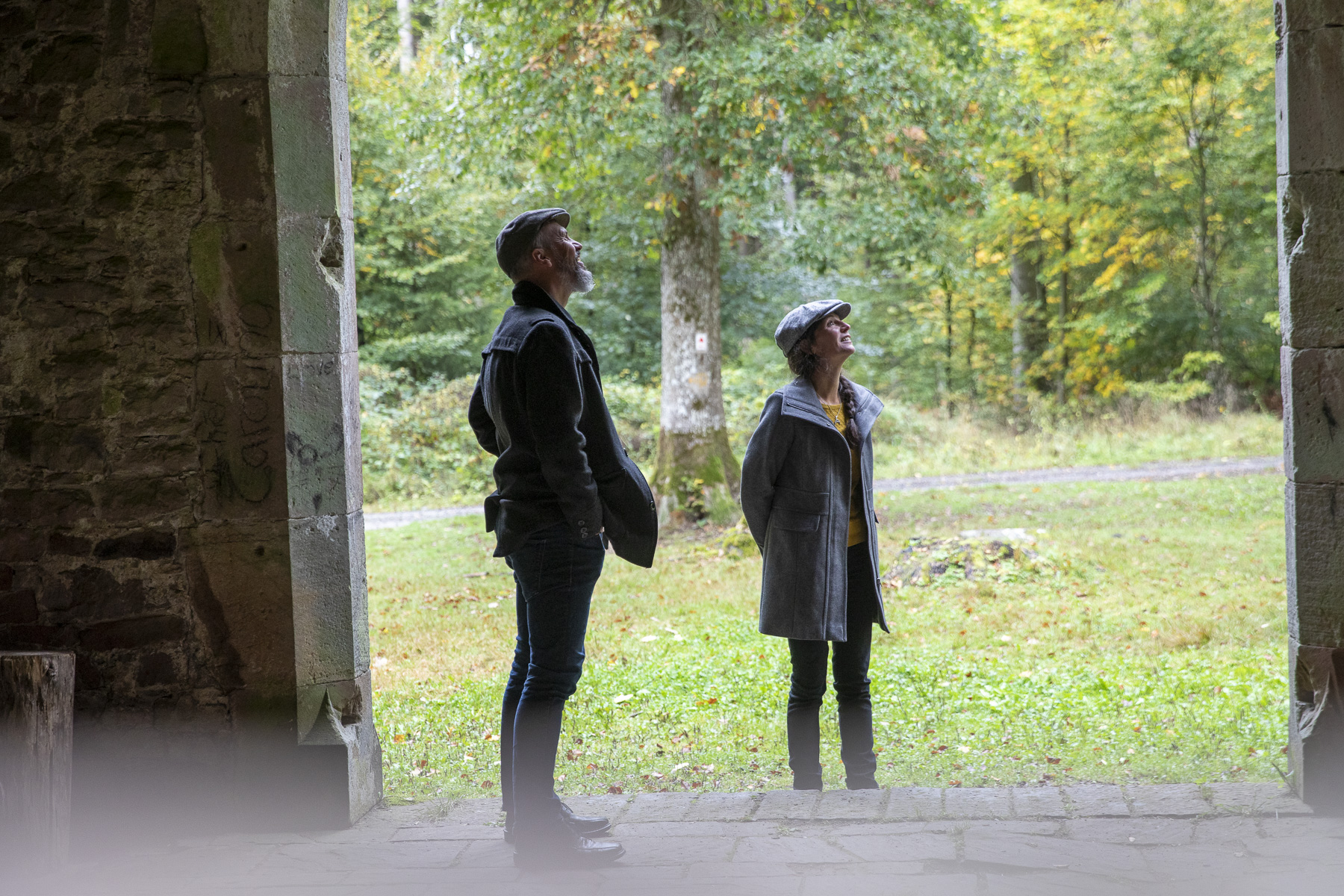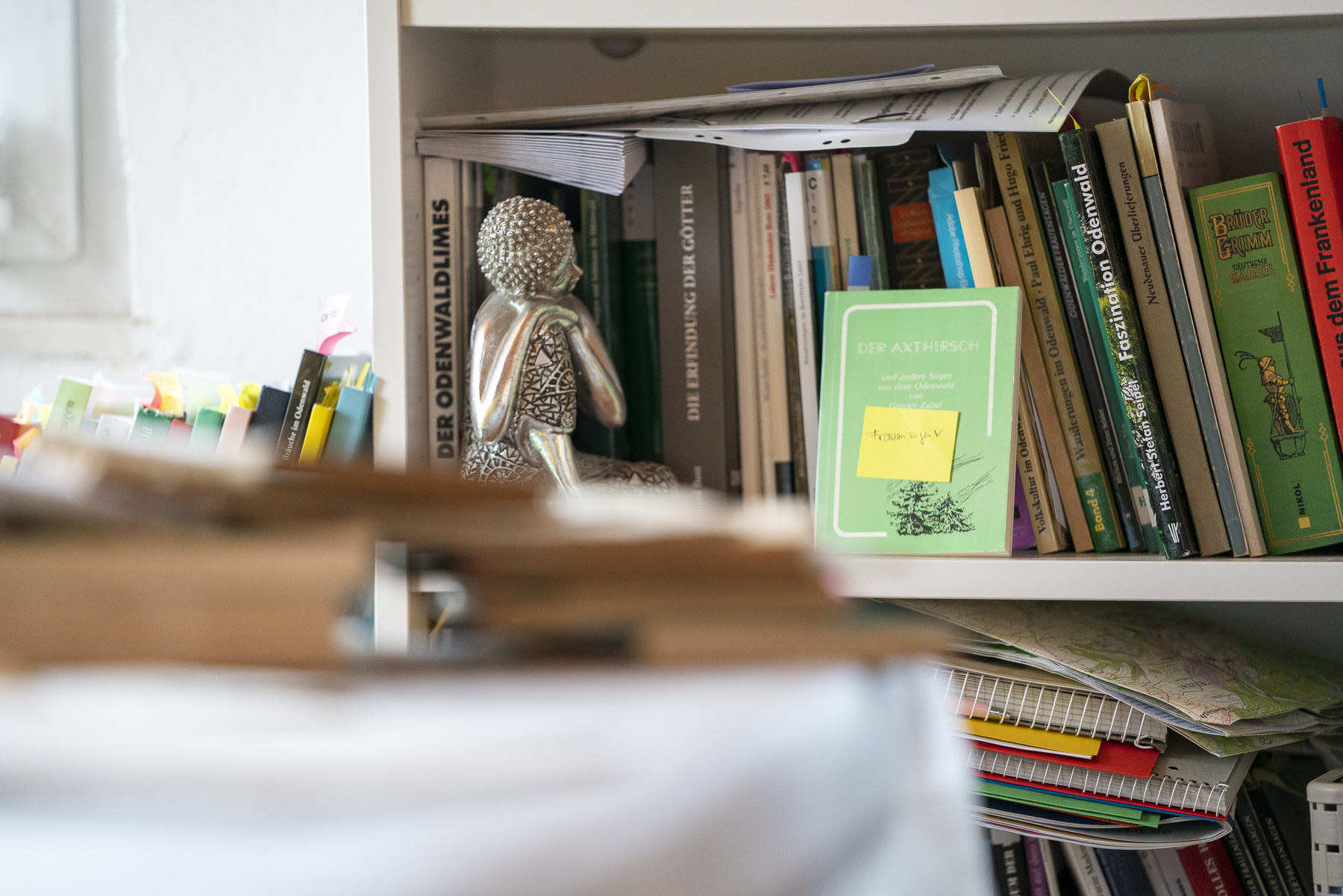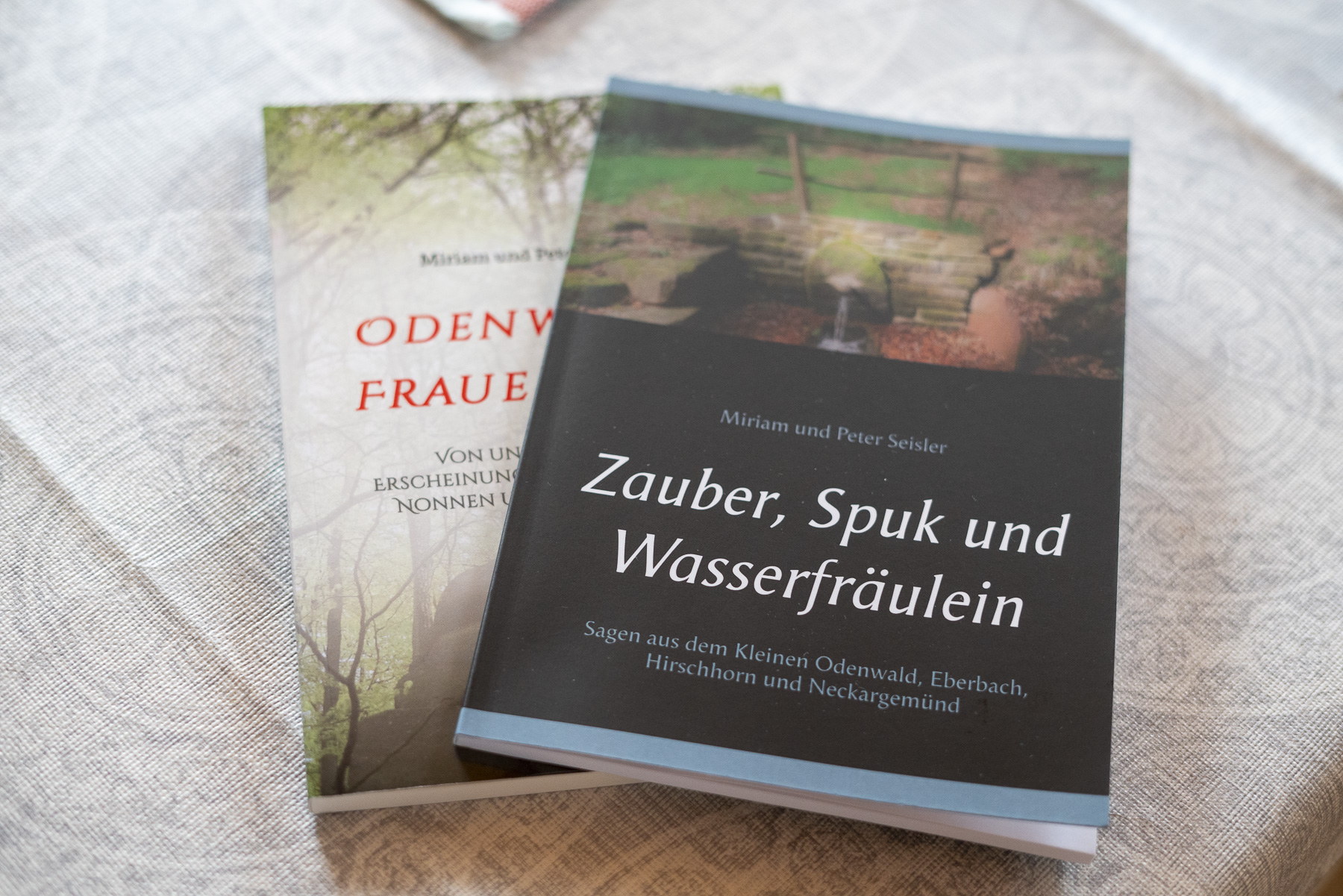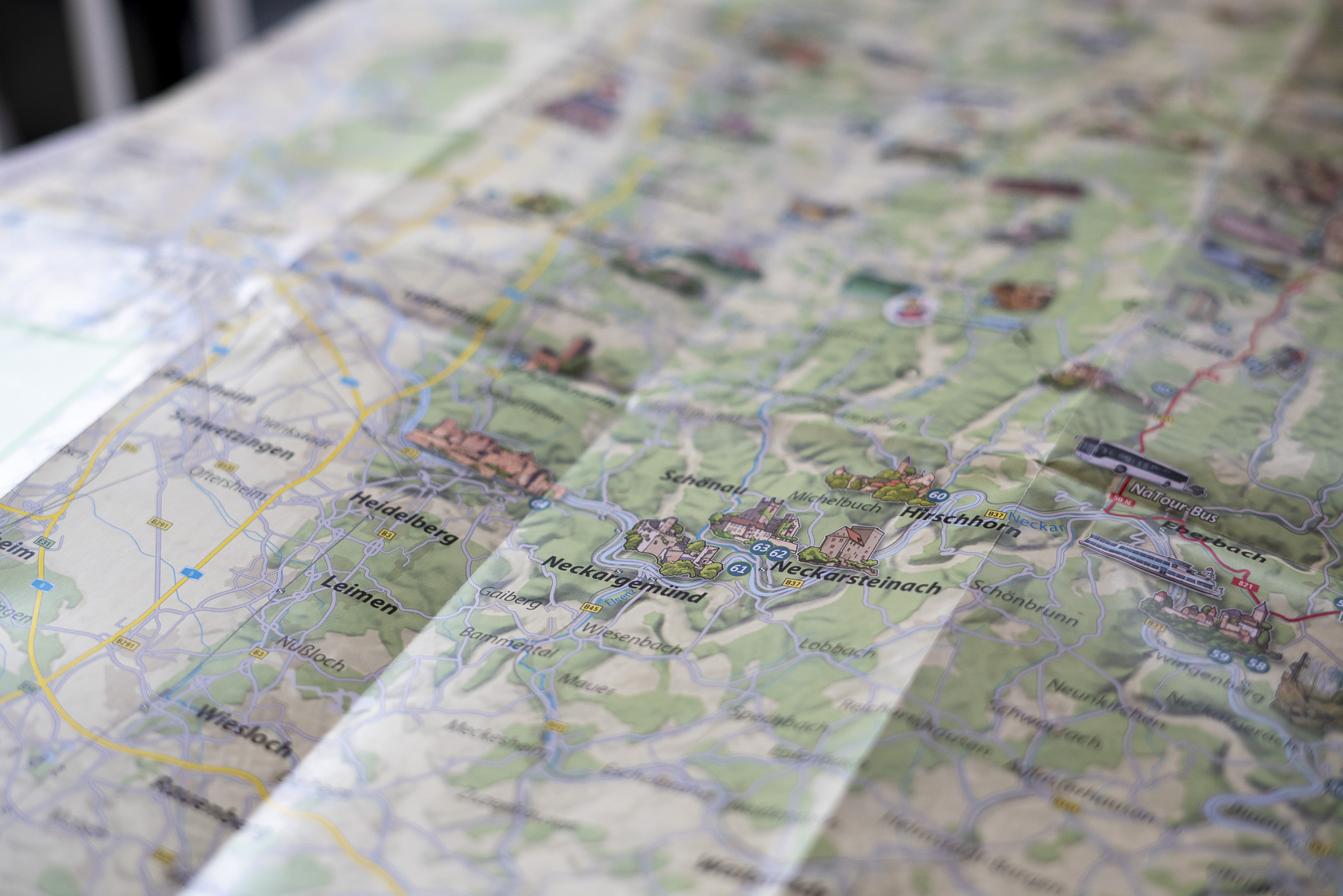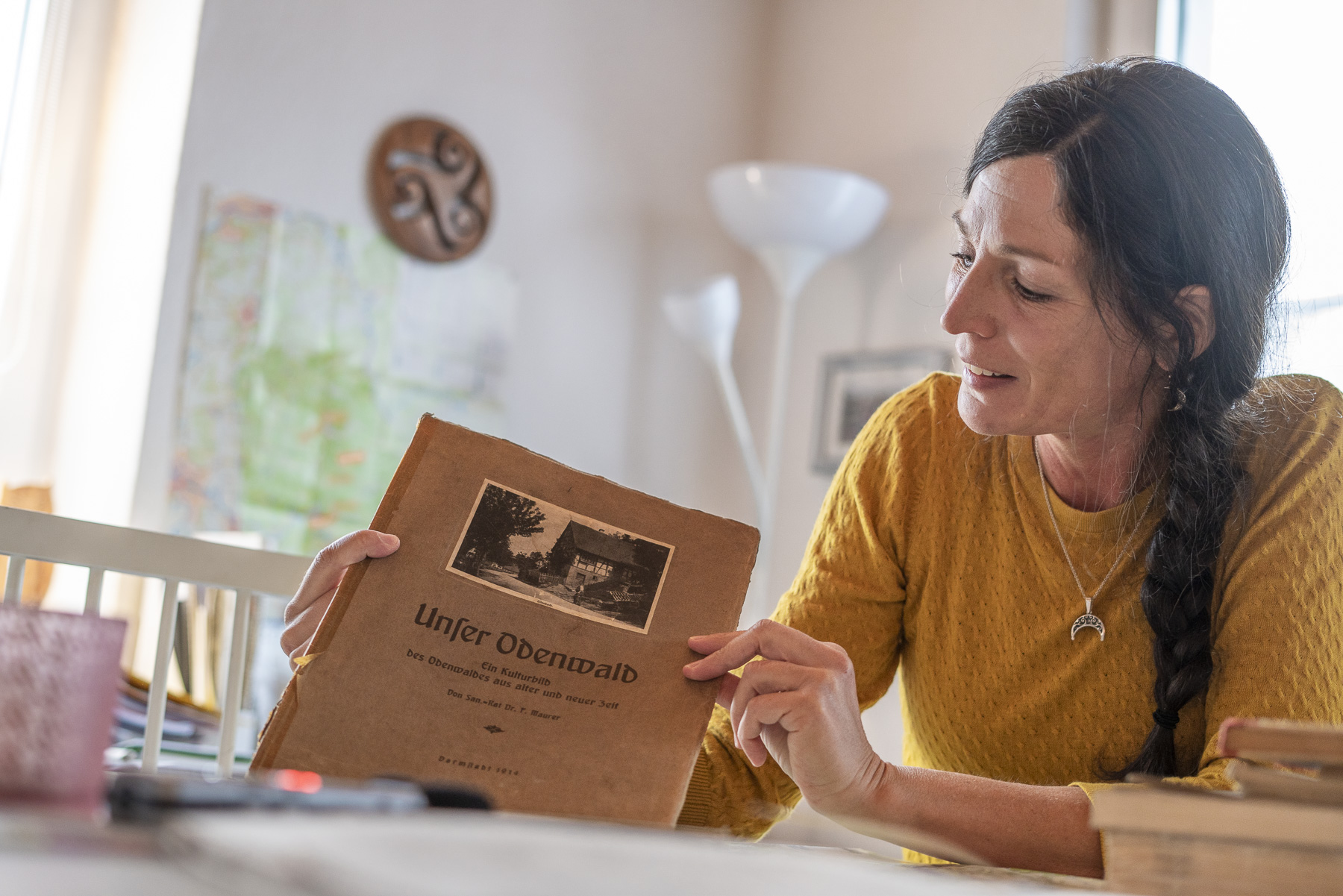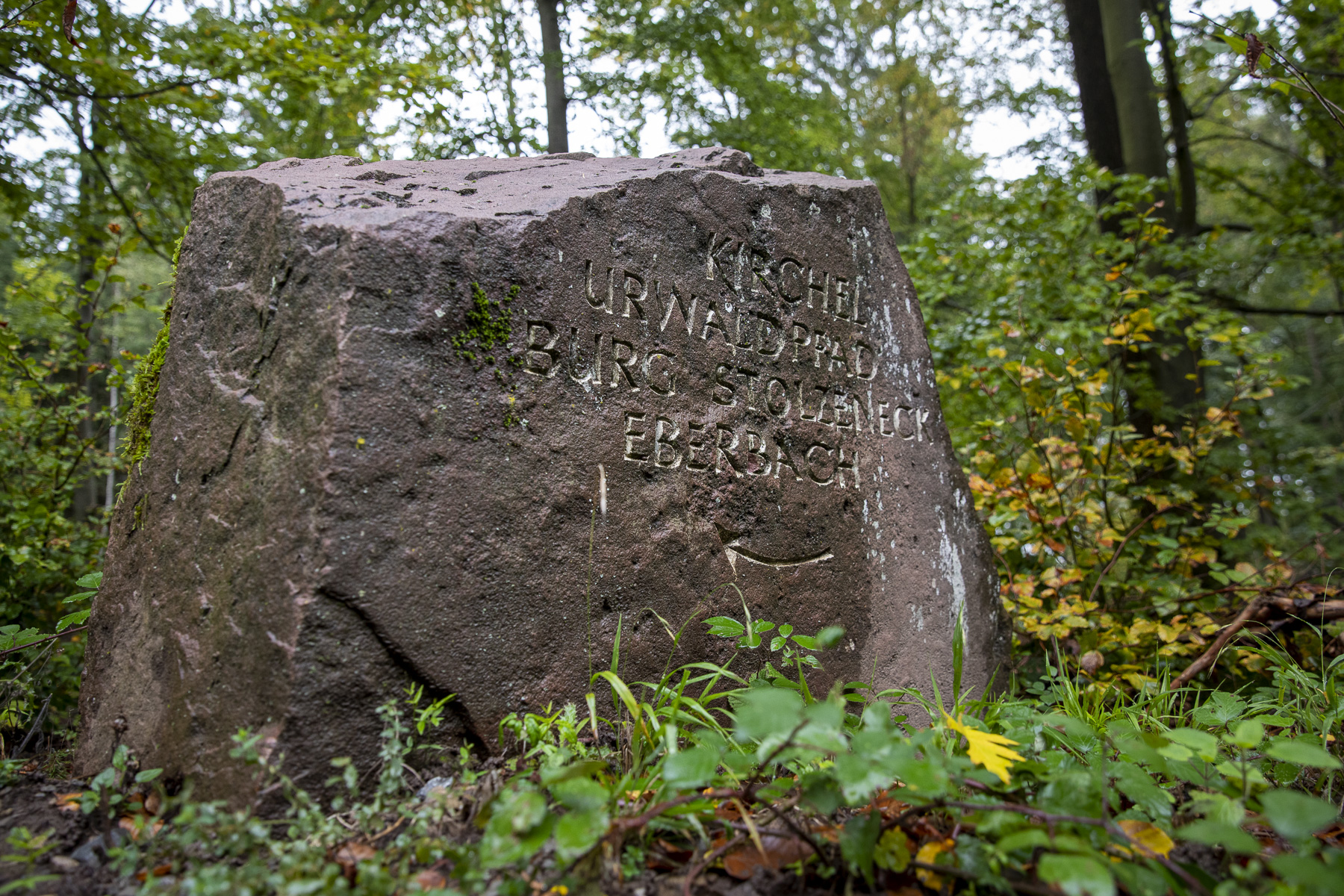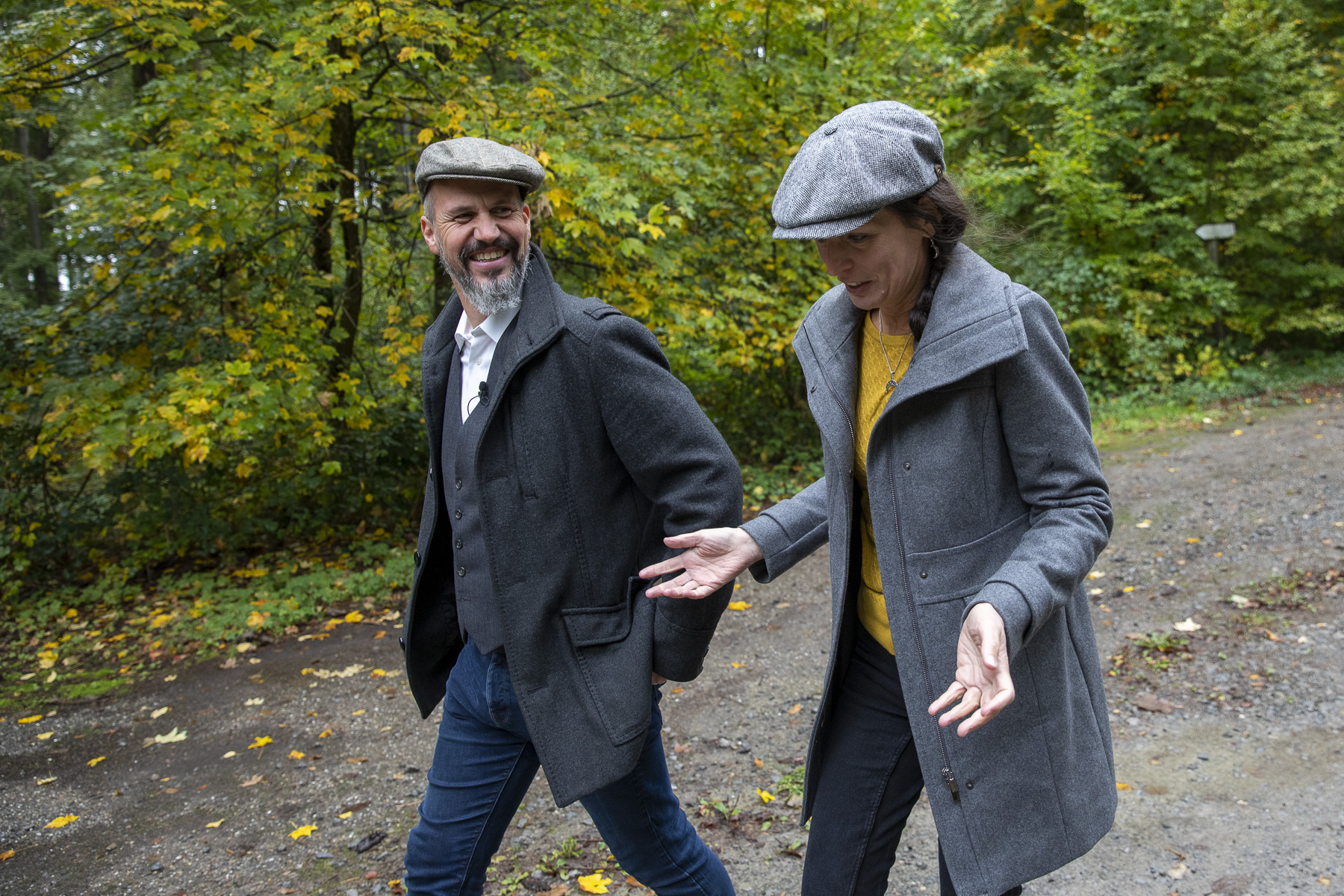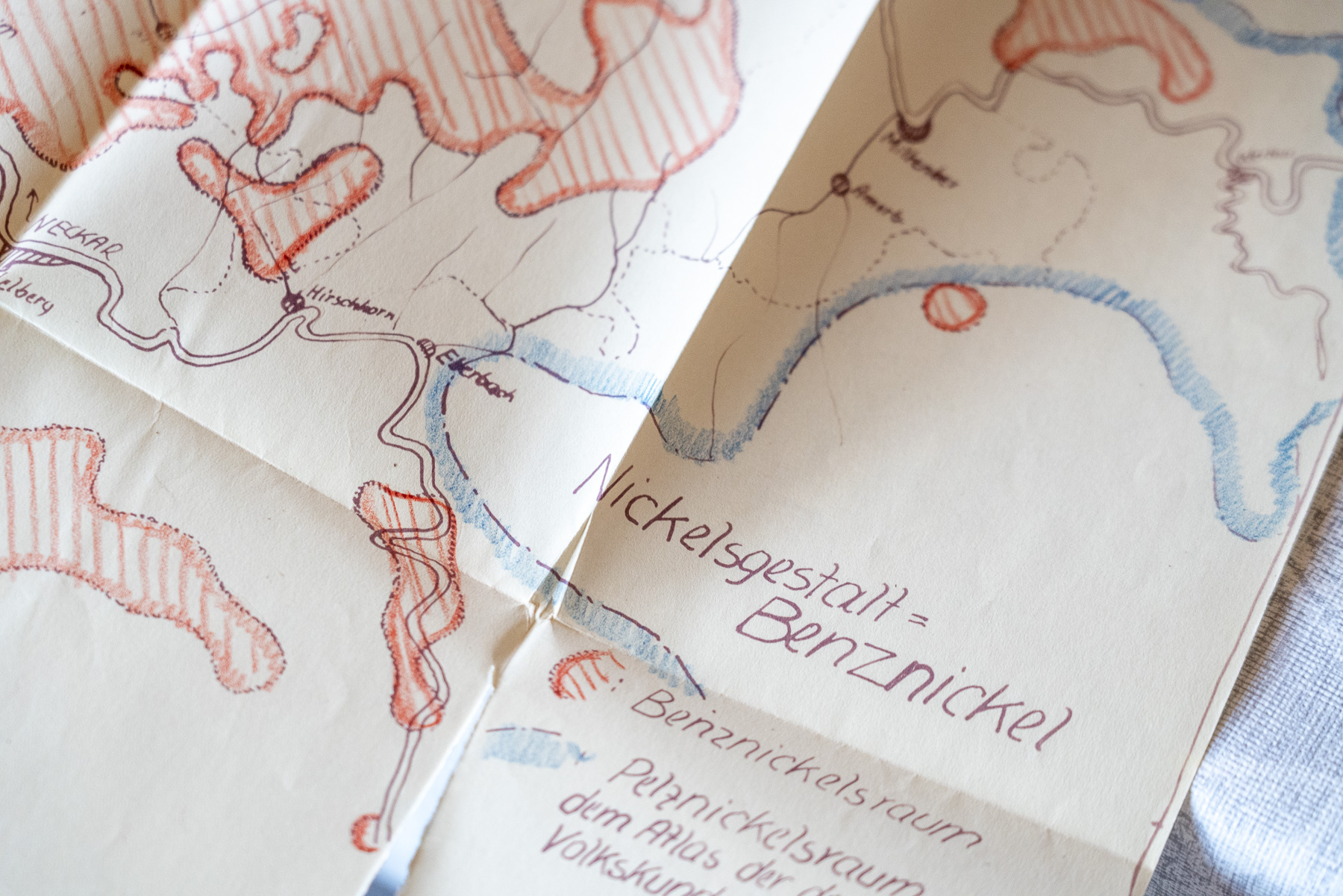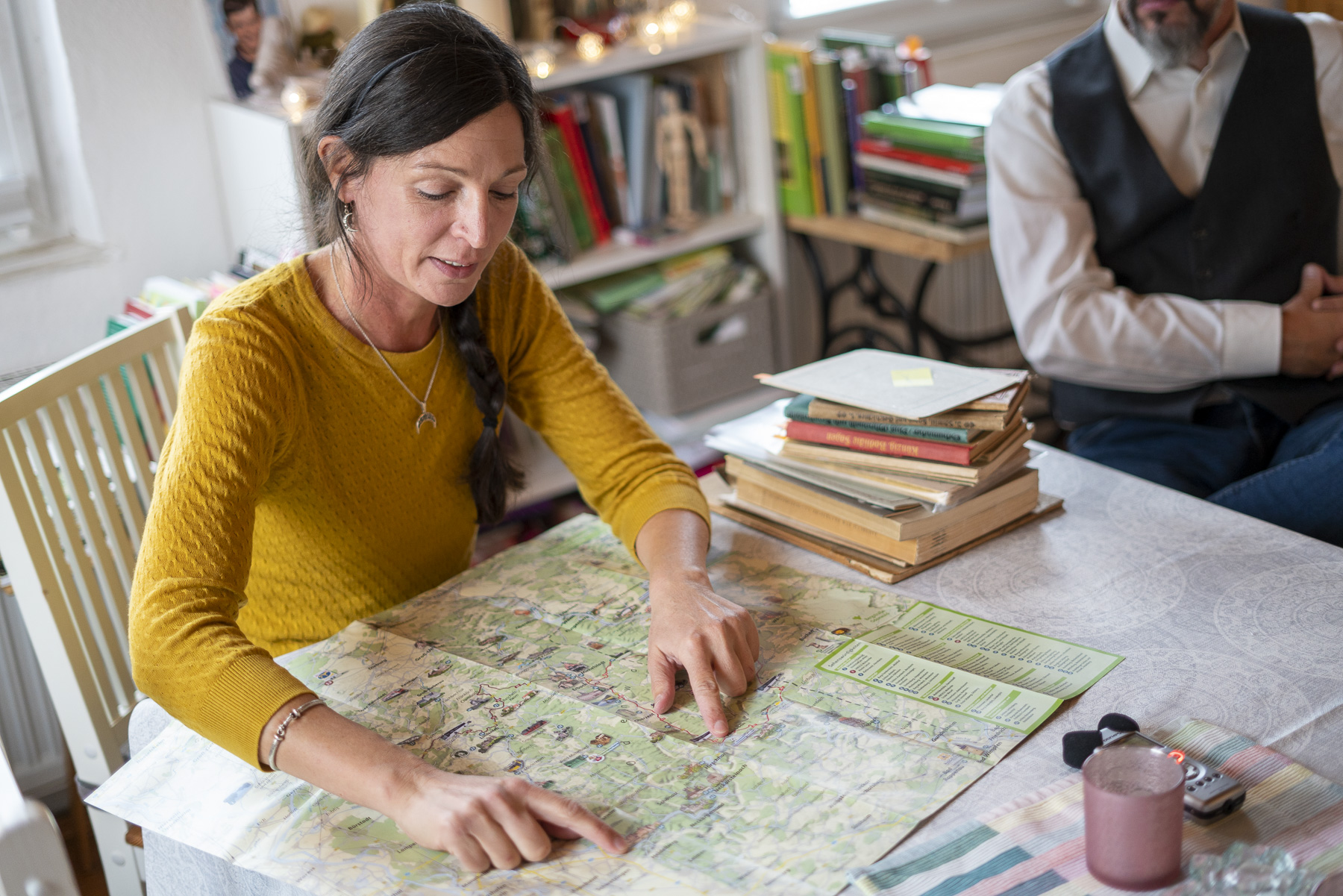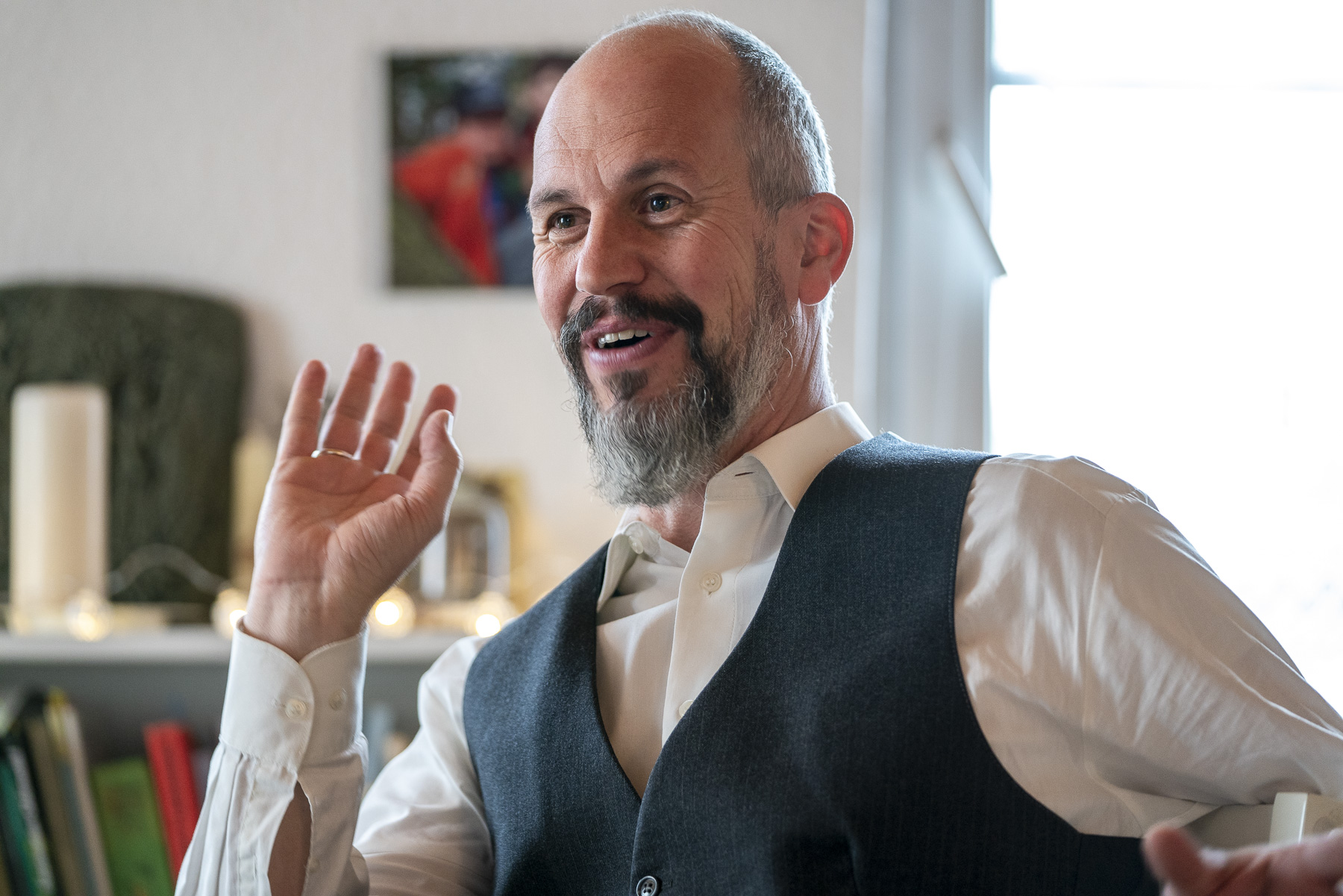Water maids and witches millers, white women and green hunters—the Little Odenwald is a legendary place. Miriam and Peter Seisler went on a research adventure to find old stories from around their home region Schönbrunn and they have found more than expected. Now, they take care that these stories don’t fall into oblivion again.
Once you follow Miriam and Peter Seisler into the Little Odenwald, mystical creatures will keep you company soon. Such as the Poppele that nobody has ever seen—but heard. When it moves through the woods here, it sound like a stick put between the spokes of a bike: “Tock. Tock. Tock.” Peter stands still and listens to the forest. Withered leaves rustle under his feet, some mist wafts between the trees and morning rain drips from the leaves. There is no “tocking” today. But nobody would be surprised if there was one. Because the couple tell the legends of the mystical creatures in their home region so passionately and lovingly as if they knew each of them personally.
The couple is standing close to the Kirchl, a late Gothic pilgrimage chapel, not far from the Schönbrunn municipality. The Höhenweg path from Eberbach to Aglasterhausen used to run along here. Today, however, the little church is surrounded by oak trees and little firs and stands right in the middle of the forest. For Miriam it is a place of power, a place where she can recharge her batteries. “No matter how stressful the day is: Every time I come to the Kirchl, I am able to unwind. It exudes such a pleasant sense of calm.” The site has not always been a Christian place of worship. Miriam and Peter are convinced that people have come and gathered here since time immemorial to worship saints and deities, long before a chapel was “placed on top” by the Church. Such steeped-in-legend places of power exist everywhere in the Odenwald. And the two explorers have become experts in tracking down these sites and their stories.
It was the passion for history that brought them together. They first met at Karfunkel-Verlag publisher’s, who published the “Zeitschrift für erlebbare Geschichte” (magazine for tangible history) of the same title. Miriam was an editing assistant and Peter completed a period of training there. Why of all did he go to this rather particular publishing house? His wife laughs: “Because he is very particular as well.” Peter smiles. The Middle Ages, role-playing games and the fantastic and mystical world have always fascinated him. Today, they live in an old farmhouse with groaning wood located in the Schönbrunn part of town called Schwanheim—together with their three children, a dog and a cat. It is located close to the village that Miriam grew up in: Allemühl.
